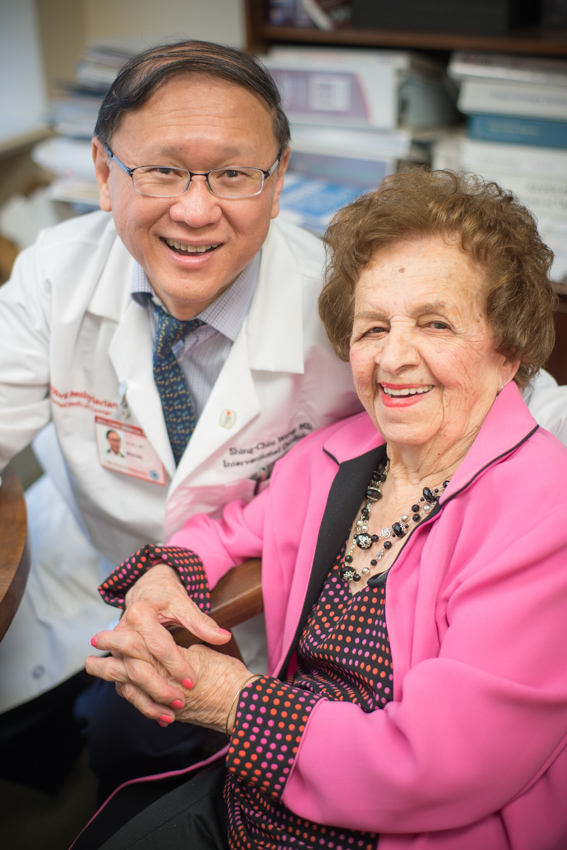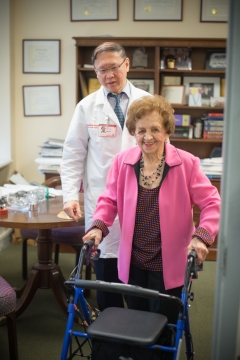
Dr. Shing-Chiu Wong has added an exciting new technology to his roster of minimally invasive tools. TAVR (Transcatheter Aortic-Valve Replacement) involves a balloon and a specially constructed stent (containing a tissue valve) to replace the aortic valve in the heart when it no longer functions properly due to narrowing. This narrowing is known as aortic stenosis. The stent is made of a chromium-cobalt based alloy similar to the stents used for coronary arteries. However, the procedure is more complex than stenting of an artery as it involves the aortic valve, the largest valve in the heart.
“The aortic valve is the main gate of the heart,” explains Dr. Wong, “if it becomes narrowed, you can imagine how difficult it is for the patient, since that valve must feed the entire body with blood. Fibrosis and calcium deposits can form like a rock, creating much pressure, making it very difficult for the valve to open and let blood through. It is a physiological problem.” He notes that cholesterol-lowering drugs have been tried in patient with non-severe aortic valve narrowing but were shown to make no difference on the valve function or progression of narrowing.
As an investigator with the PARTNERS trial, Dr. Wong and his team at Weill Cornell were involved in a multicenter comparison study between surgery versus the minimally invasive approach of TAVR for aortic stenosis. The study analyzed outcomes for two cohorts of patients, those termed as “high risk” and “no option.” “High risk” patients were either treated by conventional open heart surgery or TAVR in a random fashion. “No option” means the patient is too sick and has been turned down for any surgical procedure; in those cases, the patients were either treated medically or underwent TAVR. Since the study began in 2009, Dr. Wong has treated more than 290 patients using TAVR for aortic stenosis; in 2013 alone, he treated 102 patients. His patients typically range in age from 70 to 100-plus. Mary Licata, who is 101 years young, underwent the procedure and returned home 3 days later. At her 30-day follow-up appointment, Mary reported to Dr. Wong: “I feel 100% better.”
As a result of their efforts, Dr. Wong and colleagues (along with 24 other medical centers in US, Canada and Germany) completed the pivotal PARTNER trial which resulted in two landmark papers in The New England Journal of Medicine. It was shown that at the one-year mark, after receiving TAVR, there is no difference in the rate of death between having a surgery or receiving TAVR for high risk and in the “no option” patients, TAVR results in a 45% relative reduction of mortality compared to medically treated patients within a year. Additionally, at the three-year mark, it was shown that there is no difference in the risk for stroke for patients who underwent surgery versus TAVR.
Whether considered “high risk” or “no option” it is now clear that there is an effective option on the map for aortic stenosis – and it is minimally invasive. For the over-70 set, TAVR is a welcome solution, and as Mary attested, it can bring a new lease on life.
Related Links:
Transcatheter versus Surgical Aortic-Valve Replacement in High-Risk Patients (The New England Journal of Medicine)
Transcatheter Aortic-Valve Implantation for Aortic Stenosis in Patients Who Cannot Undergo Surgery (The New England Journal of Medicine)



